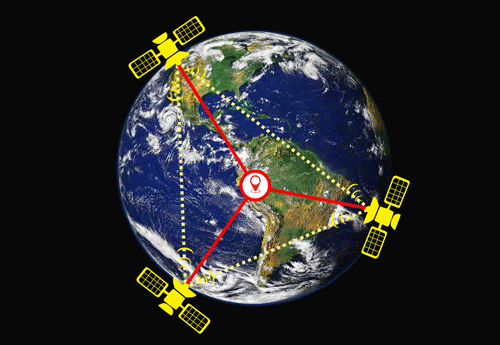High Precision Positioning Technology
 Keywords: Real Time Kinematic, RTK, Precise Point Positioning, PPP, GNSS, GPS, RTCM, Precision Positioning, Rover, Base Station
Keywords: Real Time Kinematic, RTK, Precise Point Positioning, PPP, GNSS, GPS, RTCM, Precision Positioning, Rover, Base Station
Location data is becoming increasingly important due to the growing demand of location-based services (LBS). Global Navigation Satellite System (GNSS) has been the most frequently used technology for the source of position data. GNSS refers to the collection of the constellation of satellite systems which mainly include the most popular GPS satellite system, BeiDou navigation satellite system (BDS), global navigation satellite system (GLONASS), Galileo navigation satellite system (Galileo), etc. A constellation of satellites can transmit positioning and timing data from the space to the receivers on the ground. The receivers then use this data to calculate coordinates and provide the location data to LBS devices. Although GNSS does have limitations, particularly in urban environments, GNSS equipment is still one of the few sensor choices available to system integrators that can provide absolute location data in LBS applications. Precision positioning is gaining prominence for a variety of uses including high-end equipment in the land surveying, construction, and agriculture industries. The focus has primarily been on accuracy of the location data which can be obtained. For the more recent development of applications like autonomous driving vehicles, unmanned aerial vehicles (UAV), real time kinematic (RTK ) technology will be frequently used to obtain the precision position.
Real time kinematic is a technique used to improve the accuracy of a standalone GNSS receiver. Traditional GNSS receivers, like the one in a smartphone, could only determine the position with 3-10 meters accuracy. Now, RTK technology has been enhanced to offer positioning performance within 2 centimeters. However, due to an increasing reliance on GNSS applications, it is becoming necessary to enhance the availability and reliability of GNSS devices by boosting signal robustness preventing multipath, jamming, spoofing, and interference from other sources or constellations.
With further R&D advancement, further miniaturization, lower power consumption and expansion of inexpensive multi-frequency, multi-constellation GNSS chips capable of real-time-kinematic processing is increasing the adoption and appeal of RTK for mass-market applications. RTK is primarily constrained by its requirement for bi-directional communication, limiting the number of users the network could support. PPP (Precise Point Positioning) has long convergence times which typically don’t align with mass-market user requirements. The hybridization of PPP-RTK eliminates both issues and seems promising for the mass-market. For high-precision GNSS services to achieve mainstream success, they not only need to offer wide and reliable coverage but must also facilitate innovation beyond the appeal of a niche community. This is already happening in some areas, where device-makers are partnering with correction data service providers, enabling them to bundle the service cost into the device cost that the end-user pays. The rise of innovative, precision positioning technology, combined with business models that promise to make high-precision a mass market reality, means that the coming years will be pretty exciting in terms of new market opportunities for developing creative applications and use cases and technology commercialization.
Why Unictron?
Unictron has been one of the major antenna providers in the GNSS industry. GNSS antennas currently under mass production include our patented TELA chip antennas as small as 3.2×1.6×0.5mm in dimensions as well as ceramic patch antennas as large as 50x50x8mm. Unictron is one of the major patch antenna suppliers to the Japanese automotive industry for navigation applications. Unictron continues to focus engineering resources in developing antennas suitable for both consumer grade and professional grade high-accuracy applications. Unictron’s most recently released high precision positioning product is the patented Castle patch antenna. With a monolithic design, instead of traditional stacked patches, Castle patch antennas can provide excellent receiving signal quality of L1+L2+L5+L6/E6 frequencies in a minimal dimension of patch. For more detailed information on the Castle patch antenna, please refer to the Castle patch antenna section. Please contact our engineering and service teams to satisfy your needs in antennas or receivers for high precision positioning applications.
 Keywords: Real Time Kinematic, RTK, Precise Point Positioning, PPP, GNSS, GPS, RTCM, Precision Positioning, Rover, Base Station
Keywords: Real Time Kinematic, RTK, Precise Point Positioning, PPP, GNSS, GPS, RTCM, Precision Positioning, Rover, Base Station